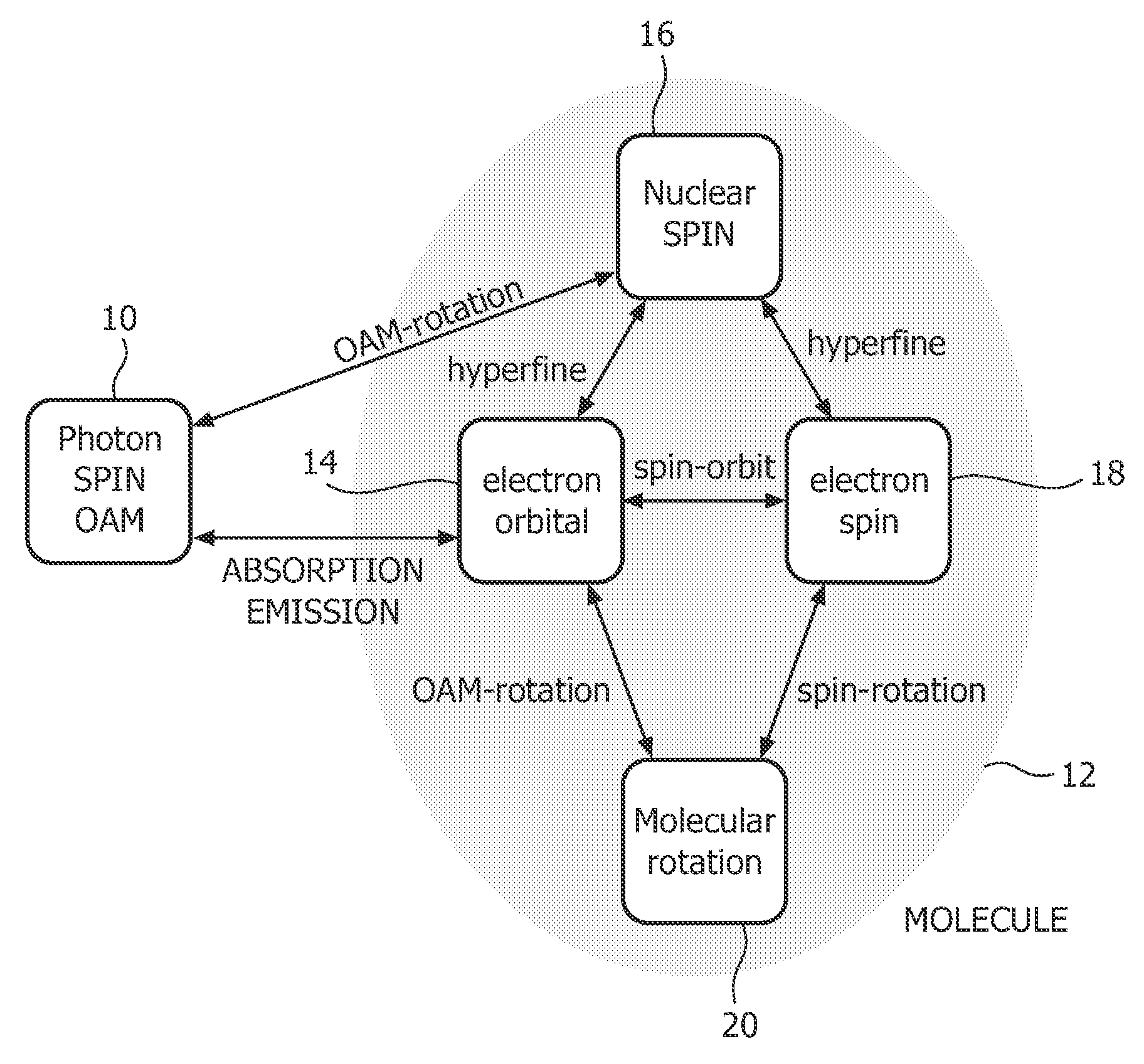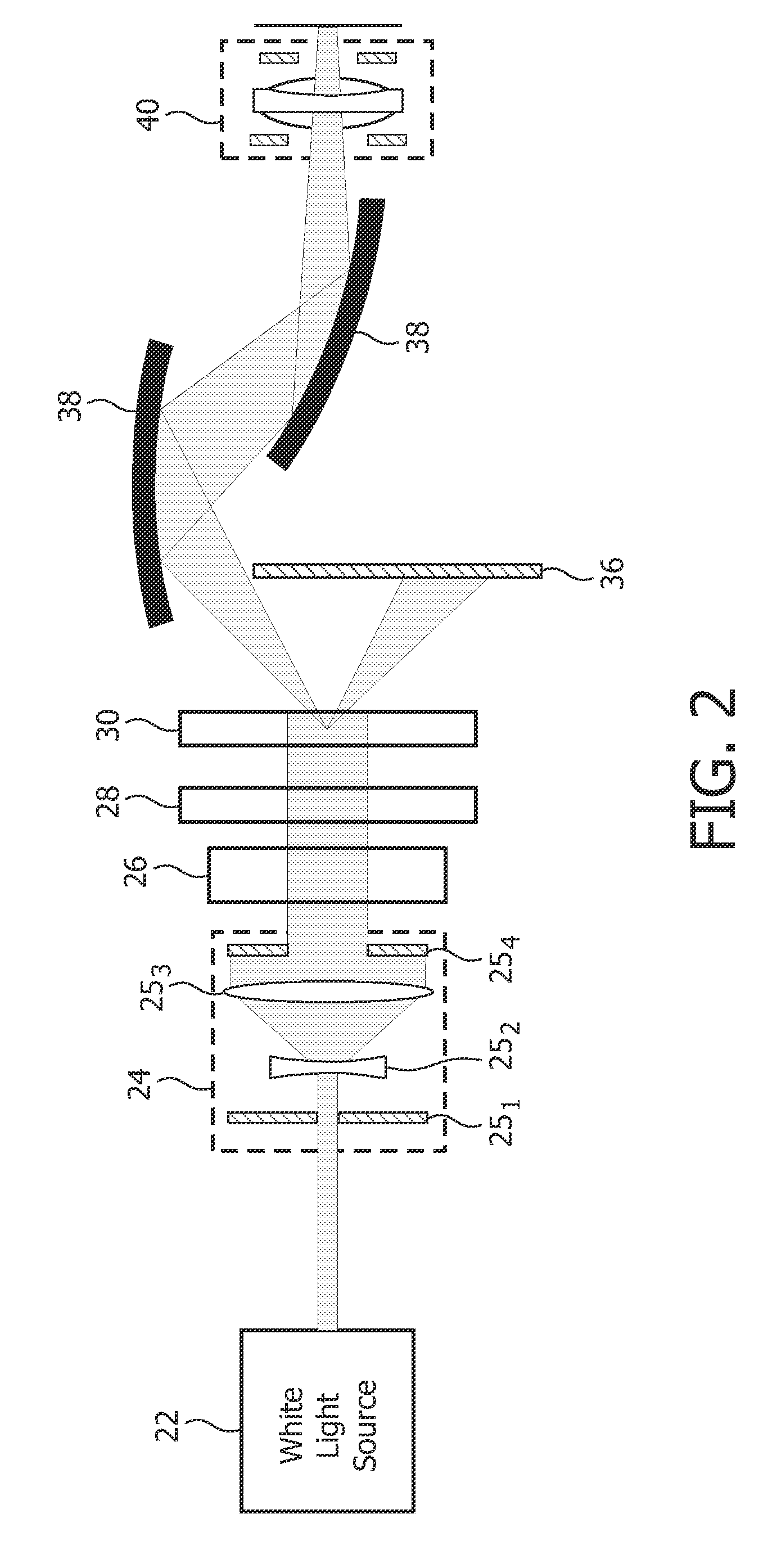Magnetic resonance imaging using hyperpolarization of liquids or solids by light with orbital angular momentum
- Summary
- Abstract
- Description
- Claims
- Application Information
AI Technical Summary
Benefits of technology
Problems solved by technology
Method used
Image
Examples
Embodiment Construction
[0028]Orbital angular momentum (OAM) is an intrinsic property of all azimuthal phase-bearing light, independent of the choice of axis about which the OAM is defined. When interacting with an electronically distinct and isolated system, such as a free atom or molecule, OAM can be transferred from the light to the matter.
[0029]Various experiments have used the interaction of OAM-endowed light with matter, for example, optical tweezers, high-throughput optical communication channels, optical encryption techniques, optical cooling (Bose-Einstein condensates), entanglement of photons with OAM, and entanglement of molecule quantum numbers with interacting photons' OAM. Because angular momentum is a conserved quantity, the OAM of absorbed photons is transferred in whole to interacting molecules. As a result, affected electron states reach saturated spin states, angular momentum of the molecule about its own center of mass is increased and oriented along the propagation axis of the incident...
PUM
 Login to View More
Login to View More Abstract
Description
Claims
Application Information
 Login to View More
Login to View More - R&D
- Intellectual Property
- Life Sciences
- Materials
- Tech Scout
- Unparalleled Data Quality
- Higher Quality Content
- 60% Fewer Hallucinations
Browse by: Latest US Patents, China's latest patents, Technical Efficacy Thesaurus, Application Domain, Technology Topic, Popular Technical Reports.
© 2025 PatSnap. All rights reserved.Legal|Privacy policy|Modern Slavery Act Transparency Statement|Sitemap|About US| Contact US: help@patsnap.com



